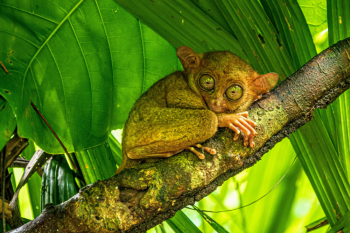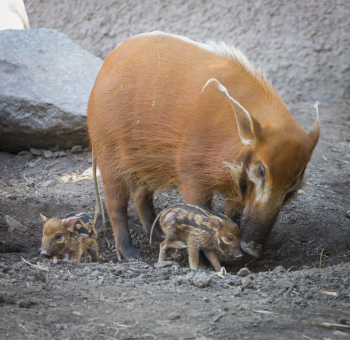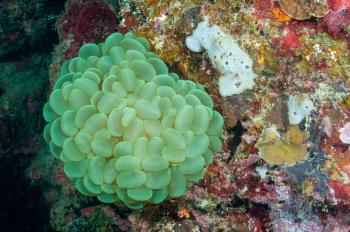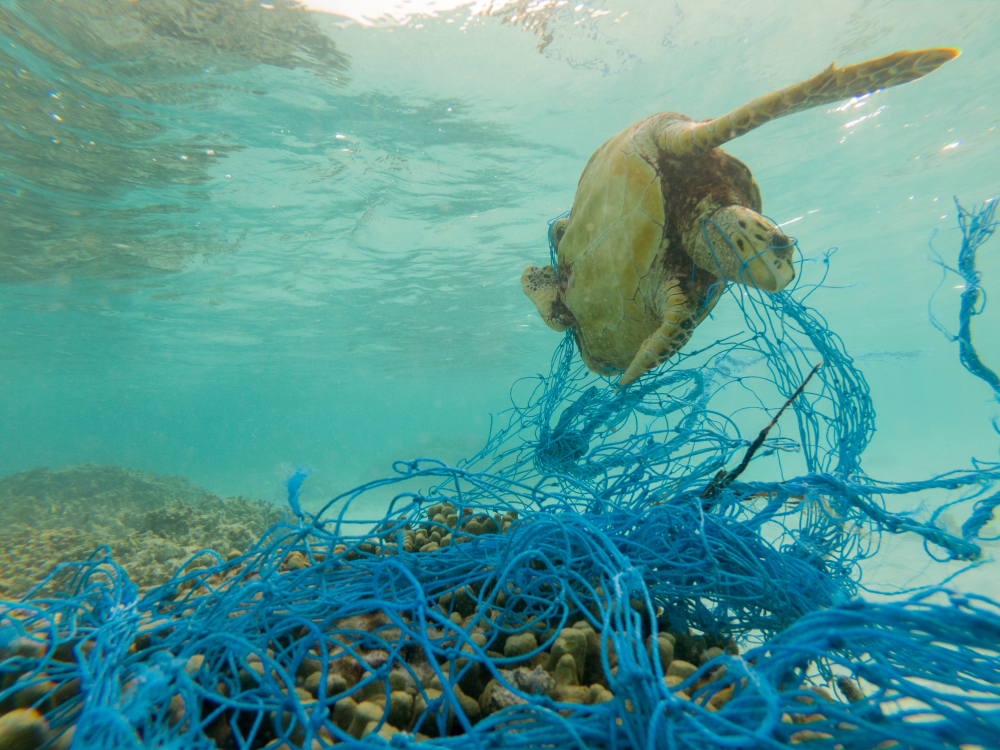Environment: Endangered Species
An endangered species is a species of animal or plant that is seriously at risk of extinction. The International Union for Conservation of Nature (IUCN), an organization funded by the European Commission, is regarded as a global authority on the world’s living species and maintains a list of the world’s endangered species. More than 8,000 scientists from 162 countries make up the IUCN’s Species Survival Commission, which designates as “threatened” any species falling within the critically endangered, endangered, and vulnerable categories. These species are assigned categories based on the level of extinction risk. Identifying a species as threatened and assigning it to one of the related categories is a complicated process, involving the analysis of multiple interconnected variables. These include population size, geographic range, and the number of breeding adults.
Risk Factors
Population Size
There are a variety of factors that put these plants and animals at risk. Most species placed on endangered lists have very small populations with a small number of breeding adults. In addition to being a problem in its own right, this can lead to a loss of genetic variation among species, since small populations of animals are forced to inbreed. The young are subsequently left vulnerable to disease and often fail to reach maturity.
Habitat
Habitat can also be a risk factor. From the clear-cutting of the Amazon rainforest for the purpose of grazing cattle to overhunting and overfishing, living species are under increasing strain in the modern world. When humans build homes, office buildings, and fun parks, preserving space for plants and animals is frequently not a priority. Loss of habitat creates a ripple effect, with animals often deprived of shelter and primary food sources that end up placing them in a vulnerable state.
Range
A plant or animal's range is a function of its habitat and is also used to assess a population's survival risks.
Environmental Factors
Finally, environmental factors such as pollution, a changing global climate, and increasingly extreme weather events are other factors placing a strain on the world’s plants and animals. Before a plant or animal is considered endangered, these factors are taken into consideration. Awareness of the problem leads to a search for solutions—and some measures are being enacted—although current trends suggest that the number of endangered species will only increase as time goes on.
The Philippines’ Threatened Species
Note: Numbers reflect current estimates and may vary by source.
Top Three Endangered Mammals of the Philippines
Tamaraw (aka Mindoro Dwarf Buffalo)
Only found on the Philippine island of Mindoro, the tamaraw is a stocky, hoofed mammal with backward facing horns and a body smaller than other bovines. It is the only bovine—among them domestic cattle and buffalo—that is native to the Philippines, where it lives in the country’s tropical highland forests and feeds on grasses and shoots of bamboo and sugarcane. Tamaraw are primarily solitary creatures that are endangered due to loss of habitat, with land converted to agricultural use or destroyed by logging and the building of infrastructure. Illegal hunting of the animal for food is another factor in their decline, while livestock diseases also affect tamaraws, which may wander into areas where livestock roam in search of food. Critically endangered, it is estimated that there are only a few hundred tamaraw remaining on Earth.

Tarsier
Large-eyed tarsiers are among the smallest primates in the world, where they live on the islands of Southeast Asia including the southern Philippines. Loss of habitat is the main reason for the species’ decline—and they once were widespread and found in Asia, Europe, Africa, and North America—while years of hunting also diminished their numbers. Preying on lizards, insects, and birds, the small-bodied, long-legged tarsiers are grayish brown in color, have long tails, and padded tips on their elongated fingers and toes that help them grip branches. Despite large, sensitive ears and the ability to turn their heads 180 degrees, enabling tarsiers to see behind it without moving its body, tarsiers are preyed on by cats and other small carnivores, large birds, and snakes. Humans, however, have the most destructive influence on the tarsiers’ survival and some people even hunt them for food. Clearing of land for agricultural use, including the grazing of livestock, along with mining and capturing the creatures for trade as exotic pets have drastically reduced their numbers. The fragmentation of the tarsiers’ natural range breaks up their habitat as well and can lead to a lack of resources or more competition for food among other animals.
Philippine Spotted Deer (aka Visayan Spotted Deer, Prince Alfred’s Deer)
Destruction of habitat as well as illegal hunting have led to the endangered status of the small Philippine Spotted Deer. They are brown in color with pale spots along their back and haunches, and males grow small antlers. This nocturnal herbivore is among the world’s rarest deer. Another factor in their decline is the animal’s small range, the islands of Panay and Negros of the Philippines’ Visaya island group, where the deer are endemic. Native to the islands’ rainforests and found nowhere else, the small and isolated population is susceptible to inbreeding, which in turn can result in young that are vulnerable to disease and may not reach a mature breeding age. Loss of habitat is primarily due to logging and from converting land to agricultural use, with the deer now limited to about five percent of their original range. With no known predators on the islands aside from humans, hunting of the deer for trophies and for specialty meat are additional factors in their decline, and some of the spotted deer have been kept as pets.

Other Endangered Mammals of the Philippines
Destruction of habitat, as well as illegal or overhunting, have led to the endangered status of many Philippine mammals, several of which are found nowhere else in the world. These are the main factors why one of the world’s largest bats, the golden-capped fruit bat (aka giant golden-crowned flying fox) is endangered, as well as the Visayan warty pig. It is believed that the pig is now only found on the islands of Negros and Panay. The Philippine warty pig has been overhunted for meat and is negatively impacted by deforestation, with land converted to agricultural use, destroyed by logging, mining, and natural disasters including fires and volcanic eruptions. The Philippine mouse deer, limited to Palawan Island, is critically endangered from loss of habitat and hunting for food. Calamian deer (aka Calamian hog deer) were overhunted and also face loss of habitat.

Endangered Invertebrates of the Philippines
Dozens of coral species are endangered in the Philippines. Rising ocean temperatures along with pollution and coastal development are the main threats to nearly 200 of the country’s approximately 600 coral species. Invertebrate species are an expansive category, which helps explain the high number of endangered invertebrates in the Philippines. Aside from mollusks, other invertebrates—those species lacking a backbone—include sponges, jellyfish, corals, sea urchins, worms, insects, spiders, and many more. A wide number of factors affect these invertebrate species, including loss of habitat due to human activity, invasive and predator species, wetland drainage, dredging, pollution, and toxic sediment. Among the country’s endangered invertebrates are several Acropora genus corals along with cauliflower corals, bubble corals, crust corals, and cat’s eye coral, the Helicostyla smargadina snail, and more than a dozen insects including the butterflies Electra’s tree-nymph, Graphium megaera, David’s tiger, and Papilio carolinensis, all of which are only found in the Philippines.
Endangered Plants of the Philippines
Known for having diverse plants, with many found nowhere else, the Philippines includes many species that are both endangered and critically endangered. Loss of habitat includes deforestation due to logging and construction, along with ecosystems degraded by air, water, and soil pollution are all major threats to Philippine flora. One endangered plant is the waling-waling, a type of orchid native to Mindanao Island where it grows on trunks of lowland rainforest trees in the Dipterocarpacaea family. Other endangered plants include the Kris plant, or Alocasia sanderiana, with V-shaped leaves that make it a popular houseplant, staghorn ferns (Platycerium coronarium), and the catmon tree, the fruits of which are used in several food products. The country’s wild arabica coffee plants are endangered due to climate change, disease, and pests. Other endangered plants include the legume Adenanthera intermedia, the Aerides lawrenciae and Aerides leeanum orchids, the Agathis philippinensis and Aglaia costata trees, and Aglaia pyriformis, among many, many others.

Endangered Birds of the Philippines
It is estimated that of the country’s more than 200 native birds, over half are now threatened in the Philippines, some being critically endangered. Many other non-native bird species live throughout the country’s forests, grasslands, and wetlands—all of which face a loss of habitat. Large bird species and those occupying high elevations or small regions are more likely to become endangered, as are birds with populations limited to only one or two of the country’s many islands. Endemic species, found only in the Philippines, are especially threatened, with one irony being the fact that many bird species have been newly discovered and yet are threatened nonetheless. Deforestation and hunting of the Philippine eagle has placed it into the critically endangered category. The red-vented cockatoo, Palawan peacock-pheasant, Philippine eagle-owl, and the Calayan rail, a flightless bird limited to Calayan Island, are among the Philippines’ numerous endangered birds. Several hornbill species like the rufous-headed hornbill, Visayan hornbill, and Sulu hornbill are endangered, and as the birds' nest in hollow trees, they are especially vulnerable to illegal logging, as well as poaching for sport or the pet trade. Colorful bleeding-heart doves, Christmas frigatebirds, and flame-templed babblers are also endangered, while the Cebu flowerpecker, Negros fruit dove, and the Isabela oriole are critically endangered.
Article written for World Trade Press by Felicia Topp.
Copyright © 1993—2025 World Trade Press. All rights reserved.

 Philippines
Philippines 